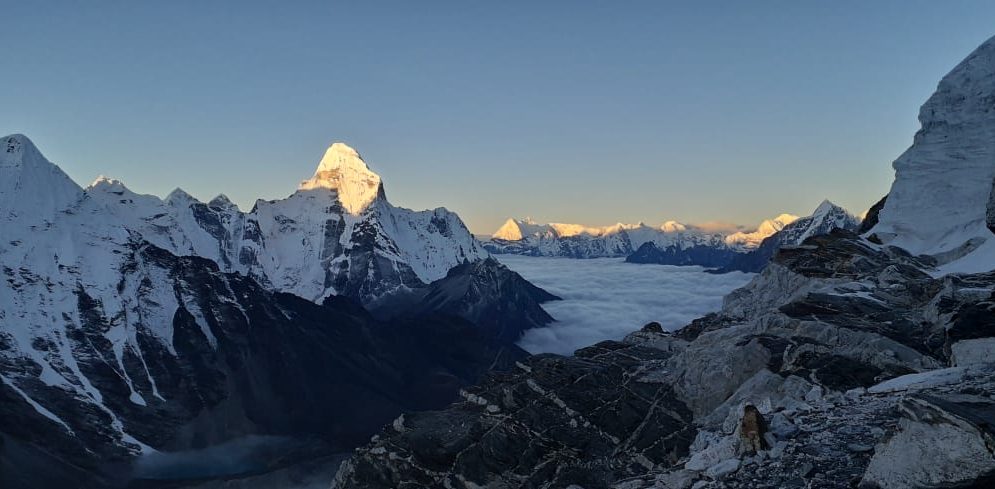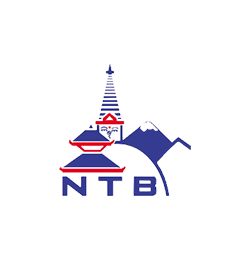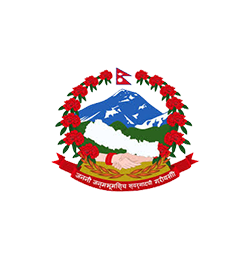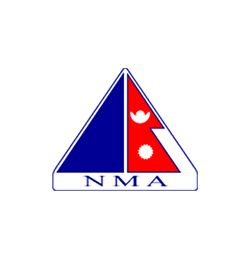
Overviews
The best time for Everest Expeditions for the safe and successful ascent to the summit of the world’s highest peaks. Depending upon the right season of the year, most preferable is spring seasons.
From the early days till the present the height of Mt. Everest has changed. From 8,848 m /29, 028 feet to 8,848.86 m / 29, 031. 69 feet high. The highest peak on this planet with various names, in the past centuries it was known as Peak XV.
Then renamed Mt. Everest in 1865 in honor of Sir George Everest, while in Nepal known as Sagarmatha. The local native Sherpa and Tibetan call Chomolungma, which in both languages means a great Mother.
Different names for one single mountain, Mt. Everest remains the world’s number one peak, located in the eastern Himalayas.
Mt. Everest straddles the border between Tibet / China, the North Face, and Nepal with the South Face. Most Everest Expeditions are active from the Nepal side climbing to the summit via South Col, known as Hillary’s Steps.
From the Tibet side, one can drive to Everest North Base Camp via Rongbuk Monastery at 5, 200 m. Where’s from the Nepalese side Everest South Base Camp is reached after walking from Lukla in 6 to 7 days.
Everest Expeditions is much preferable from Khumbu, Nepal. Due to its fascinating scenery and warm friendly hospitality of local native Sherpa.
The climb to the Everest summit requires good teamwork with logistical support. Where mountaineers find it better in Nepal than on Tibet / China side, although some of the sections are very technical. Like going through the notorious Khumbu Ice-Falls, the main obstacles and challenges to face from the Nepal South Face of Everest.
But still, Everest Expedition is interesting, full of exciting thrills from the high Khumbu areas of eastern Nepal. After years of preparations for the Everest Expeditions, where weather plays an important role and choosing the best time.
Spring time of March to May:
The best time and season for Mt. Everest Expeditions, as well as for other various high Himalayan peaks is in spring. Most Mountaineering Expedition begins from March till the end of May or the first week of June. For Mt. Everest Expeditions the climbers require a maximum of 2-3 months and a minimum of 1-2 months.
The advance party is sent first to set up the base camp and store all the gears. Which is carried by Yaks or pack animals called Zhopkyo a cross breed of normal cow and Yaks. In springtime, the days are much longer to cover much distance as well as preparation for the long climbing days.
Why most Expedition run Springtime?
Most adventure and mountaineering expeditions and smaller-scale climbing take place in springtime. From March to May, where days are bright and full of sunshine with longer days due to sun-light hours.
This makes the expeditions much easier to cover long-distance walks and climb during springtime with longer sunny days. The other best part of spring where hills are much greener and more colorful with wildflowers in full bloom. Makes the walks more interesting and much livelier than any other season, springtime enriched with flora and fauna.
The best time of spring for Everest Expeditions, as well as for trekking around the whole Himalayas, region. Where one can enjoy clear views of surrounding scenery and snow-capped peaks, although afternoon can get overcast sometimes.
The morning and late afternoon till nighttime are much cooler, but the daytime is much warmer. With pleasant days for scenic walks and climbs having much longer sunlight to complete the day on time.
As for Mt. Everest Expedition, springtime is chosen due to its long schedule of time that needs. Planning and getting organizing which requires long hours, and spring is the best time to complete the chosen mission.
The other benefit of the spring season, besides longer sunlight hours, is that fewer chances of avalanches. As the snow and ice are hardened by the long winter months till mid of March. Avalanches do occur, but compared to other seasons are quite less which makes the climb much safer and more successful.
Other seasons for Everest Expeditions
The monsoon from the Nepal side of Mt. Everest is not enjoyable and quite risky with rock falls and landslides. As well with frequent avalanches, the only safe and possible way for the Mt. Everest expedition is from the North Tibet side.
Where monsoon rain does not affect the dry Tibetan plateau, as the area falls on rain-shadow. The monsoon’s dark heavy clouds are blocked by the massif Himalayas which is why the country is dry. July and August are the high seasons for monsoon wet rains as well as summertime around the Himalayas. Where southern side of the Himalayas gets a lot of rain which makes mountaineering quite difficult.
Autumn or fall is another best time for Everest Expedition also, but very few mountaineers are interested in the climb. As the autumn season is much cold with shorter days due to sunlight hours. Because of late sunrise and faster sunsets, which makes the days very short to accomplish the mission and expedition.
Autumn begins in September and ends in November, possible for short and small-scale expeditions. For bigger mountains like Mt. Everest requires much time more than a month. This is why most major expedition to higher peaks above 8,000 m does not operate. But for smaller peaks above and below 7,000 m, mountaineers do visit for the climb.
Mountaineering expedition in winter times of December to February is not popular among climbers. Especially for large-scale expeditions, smaller mountains do get climbers in the middle of winter also.
The only Everest Expeditions done in winter times are by the Koreans but have not succeeded in reaching the summit. But the challenge is on, for Korean mountaineers and climbers to reach on top of Mt. Everest, in winter. Which will create a new fresh history in the world of mountaineering.
However warmer times of spring and cold months of autumn and winter, where Himalayan Mountains are cold as ice. In all seasons of the year, the challenges continue. But the good thing is in Nepal the royalty and climbing fees for Mt. Everest. As well other peaks have special discounts for off-season mountaineering expeditions.






